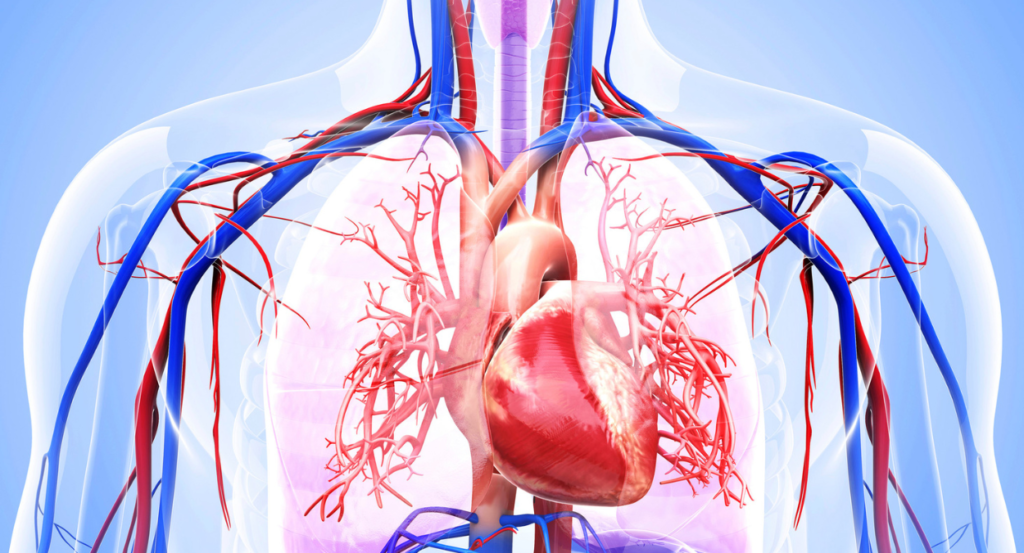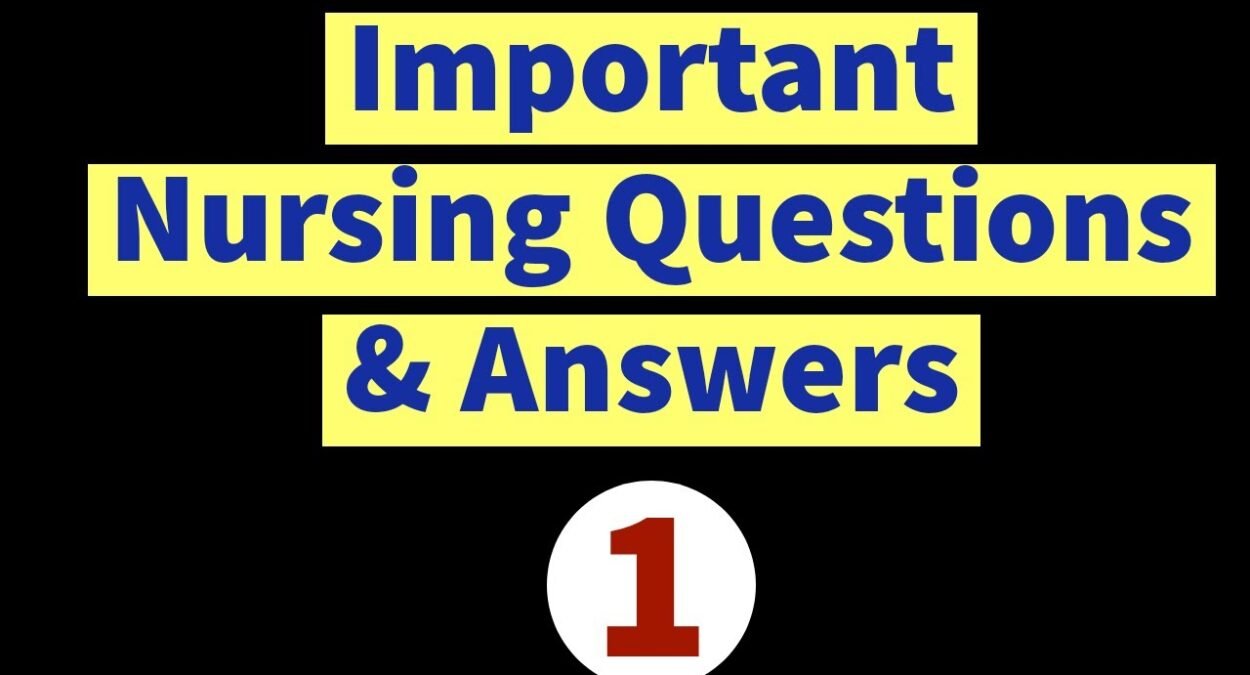Cardiovascular System And Respiratory System form 2 intricate networks crucial for sustaining life and ensuring the optimal functioning of the human body
The Cardiovascular and Respiratory Systems form two intricate networks crucial for sustaining life and ensuring the optimal functioning of the human body.
Cardiovascular System:
The cardiovascular system, often referred to as the circulatory system, comprises the heart, blood vessels, and blood. Functioning as a dynamic pump, the heart propels oxygenated blood through arteries to various organs and tissues. It then returns deoxygenated blood to the heart through veins, while capillaries facilitate the exchange of nutrients and waste products. This system ensures a continuous flow, delivering vital substances and maintaining the body’s overall equilibrium. A healthy cardiovascular system is pivotal for sustained vitality and overall well-being.
Respiratory System:
The respiratory system is responsible for the exchange of oxygen and carbon dioxide, a process vital for cellular function. Consisting of the lungs, airways, and respiratory muscles, this system enables inhalation and exhalation. Oxygen is absorbed by the lungs and transported to the bloodstream, while carbon dioxide is expelled. Protective mechanisms such as mucus and cilia guard against harmful particles, emphasizing the crucial role of the respiratory system in sustaining life. Maintaining respiratory health is paramount for optimal oxygenation and overall bodily function.
Together, these systems work harmoniously, ensuring the delivery of oxygen to cells, removing waste products, and maintaining the body’s homeostasis. The Cardiovascular and Respiratory Systems represent a complex and interconnected web essential for life’s continuous and seamless processes.

Cardiovascular System: The Heart of the Matter
The cardiovascular system, often hailed as the circulatory system, is a dynamic network within the human body responsible for the transportation of vital substances. This intricate system comprises the heart, blood vessels, and blood, working in tandem to sustain life and maintain optimal health.
Explanation of the Cardiovascular System
The cardiovascular system functions like a meticulously designed transportation system, ensuring the continuous flow of essential substances throughout the body. It is a closed loop system, with the heart acting as the central pump, propelling blood through a vast network of blood vessels.

Functions of the Heart, Blood Vessels, and Blood
1. The Heart
Function: The heart is a muscular organ that serves as the central pump of the cardiovascular system. It contracts rhythmically to propel blood to all parts of the body.
Chambers: Divided into four chambers – two atria (upper chambers) and two ventricles (lower chambers).
Circulation: The right side pumps oxygendepleted blood to the lungs for oxygenation, while the left side pumps oxygenrich blood to the rest of the body.
2. Blood Vessels
Function: Blood vessels form a complex network that carries blood to and from the heart, reaching every cell in the body.
Types of Vessels:
Arteries: Carry oxygenated blood away from the heart to various body tissues.
Veins: Transport deoxygenated blood back to the heart.
Capillaries: Tiny vessels facilitating the exchange of nutrients, oxygen, and waste products between blood and tissues.
3. Blood
Function: Blood is the lifesustaining fluid that circulates through the cardiovascular system, carrying essential substances.
Components: Consists of red blood cells (carry oxygen), white blood cells (immune defense), platelets (blood clotting), and plasma (fluid carrying nutrients and waste).
Significance in Transportation of Nutrients and Oxygen
The cardiovascular system plays a crucial role in ensuring the delivery of nutrients and oxygen to every cell, as well as the removal of waste products. This process, known as systemic circulation, is essential for maintaining the body’s metabolic balance.
1. Nutrient Transportation
Process: The digestive system breaks down food into nutrients, which are absorbed into the bloodstream.
Transport: The cardiovascular system transports these nutrients, via the blood, to cells throughout the body.
Utilization: Cells utilize these nutrients for energy, growth, and various metabolic functions.
2. Oxygen Transportation
Process: The respiratory system extracts oxygen from the air during breathing.
Transport: Oxygen binds to red blood cells in the lungs and is transported via the bloodstream.
Utilization: Cells use oxygen to produce energy through cellular respiration.
3. Waste Removal
Process: Cells produce waste products as part of their metabolic activities.
Transport: Blood carries these waste products, such as carbon dioxide, back to the lungs and other excretory organs.
Elimination: The respiratory system expels carbon dioxide, and other waste is eliminated through organs like the kidneys.
The Symphony of Life
Imagine the cardiovascular system as the conductor of life’s symphony, orchestrating the harmonious circulation of blood, nutrients, and oxygen. Each beat of the heart, each pulse through the arteries and veins, sustains the vitality of the body.
Understanding the intricacies of the cardiovascular system not only highlights its physiological significance but also underscores the importance of lifestyle choices in maintaining its health. As we delve deeper into the marvels of human biology, the cardiovascular system stands as a testament to the intricately interwoven symphony that keeps us alive and thriving.

Respiratory System: Breathing Life In
The respiratory system is a remarkable biological network dedicated to the exchange of gases, allowing the human body to take in lifesustaining oxygen and expel carbon dioxide. Comprising organs such as the lungs and a complex system of airways, this intricate system is essential for the body’s survival and overall wellbeing.
Overview of the Respiratory System
The respiratory system is like the body’s air purification and distribution center, ensuring a continuous supply of oxygen while expelling carbon dioxide, a byproduct of cellular respiration. Divided into the upper and lower respiratory tracts, this system includes structures such as the nose, pharynx, larynx, trachea, bronchi, and lungs.

Role of the Lungs and Airways
1. Lungs
Function: The lungs are the primary respiratory organs responsible for the exchange of gases.
Structure: Divided into lobes, the lungs are spongy, elastic organs housed within the chest cavity.
Gas Exchange: Oxygen from inhaled air diffuses into the bloodstream, while carbon dioxide is released from the blood into the lungs to be expelled during exhalation.
2. Airways
Structure: The airways include the trachea (windpipe), bronchi, bronchioles, and alveoli.
Pathway: Air enters the respiratory system through the nose or mouth, travels down the trachea, and branches into bronchi, which further divide into bronchioles.
Air Filtration: Hairs and mucus in the nose trap impurities, preventing them from reaching the lungs.
Exchange of Oxygen and Carbon Dioxide
The respiratory system facilitates the crucial exchange of gases, ensuring that the body receives oxygen for cellular activities while efficiently eliminating carbon dioxide, a metabolic waste product.
1. Inhalation (Inspiration)
Process: During inhalation, the diaphragm contracts, and the ribcage expands, creating a vacuum that draws air into the lungs.
Oxygen Exchange: In the alveoli (tiny air sacs in the lungs), oxygen diffuses across the thin walls into the bloodstream.
Transport: Oxygenated blood is then pumped by the heart to various tissues and organs.
2. Exhalation (Expiration)
Process: Exhalation is a passive process where the diaphragm relaxes, and the ribcage returns to its original position, expelling air from the lungs.
Carbon Dioxide Exchange: In the alveoli, carbon dioxide from the bloodstream diffuses into the air in the lungs.
Elimination: The expelled air carries carbon dioxide out of the body during exhalation.
Breathing Life into Every Cell
Consider the respiratory system as the lifegiving force, ensuring a continuous supply of oxygen to sustain cellular functions and expelling carbon dioxide to maintain the body’s acidbase balance. This rhythmic process, driven by the expansion and contraction of the lungs, is essential for the body’s survival and overall functionality.
Understanding the intricacies of the respiratory system not only emphasizes its vital role in oxygenating the body but also underscores the importance of maintaining respiratory health. As we journey through the wonders of human physiology, the respiratory system stands as a testament to the precision and efficiency with which our bodies manage the breath of life.
FAQs about the Cardiovascular Systems:
1. Q: What is the Cardiovascular System, and what does it consist of?
A: The Cardiovascular System, also known as the circulatory system, comprises the heart, blood vessels (arteries, veins, and capillaries), and blood. It functions to circulate oxygen, nutrients, hormones, and remove waste throughout the body.
2. Q: What are the main functions of the heart in the Cardiovascular System?
A: The heart serves as the central pump, contracting to propel blood throughout the body. It maintains blood circulation, ensuring oxygen and nutrients reach tissues and organs.
3. Q: How does blood circulation work in the Cardiovascular System, and what roles do arteries, veins, and capillaries play?
A: Arteries carry oxygenated blood away from the heart, veins return deoxygenated blood to the heart, and capillaries facilitate nutrient and gas exchange between the blood and surrounding tissues.
4. Q: What lifestyle choices contribute to a healthy Cardiovascular System?
A: Regular exercise, a balanced diet, maintaining a healthy weight, avoiding smoking, and managing stress are crucial for cardiovascular health.
5. Q: What are common cardiovascular diseases, and how can they be prevented?
A: Conditions like heart disease, hypertension, and strokes can be prevented or mitigated by adopting a hearthealthy lifestyle, including regular exercise and a nutritious diet.
FAQs About The Respiratory System:
6. Q: What is the Respiratory System, and what are its primary components?
A: The Respiratory System includes the lungs, airways, and respiratory muscles. It is responsible for the exchange of oxygen and carbon dioxide in the body.
7. Q: How do the lungs function in the Respiratory System, and what is the process of gas exchange?
A: The lungs expand and contract to allow air exchange. Oxygen is taken in, and carbon dioxide is expelled through tiny air sacs called alveoli.
8. Q: How does the Respiratory System protect against airborne particles and infections?
A: Mechanisms like mucus and cilia trap and expel particles, while the immune system within the respiratory tract fights infections, safeguarding against respiratory illnesses.
9. Q: How does smoking impact the Respiratory System, and what are the consequences of respiratory diseases?
A: Smoking damages the respiratory tract, leading to conditions like chronic obstructive pulmonary disease (COPD) and lung cancer, emphasizing the importance of maintaining respiratory health.
10. Q: Can environmental factors affect respiratory health, and how can one promote lung wellbeing?
A: Exposure to pollutants and allergens can harm the respiratory system. Ensuring clean air, avoiding smoking, and maintaining a healthy lifestyle contribute to optimal respiratory function.
These FAQs provide insights into the functions and maintenance of the Cardiovascular and Respiratory Systems.





